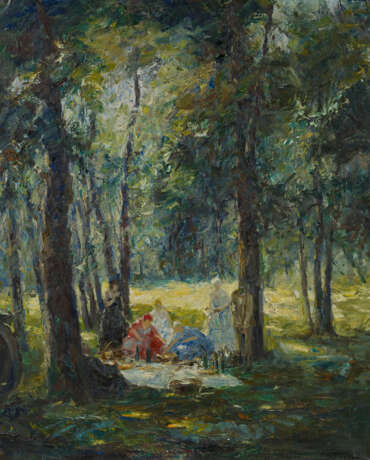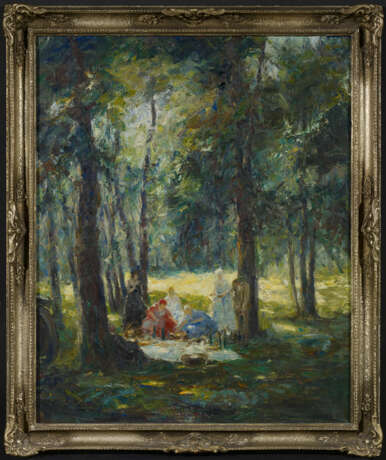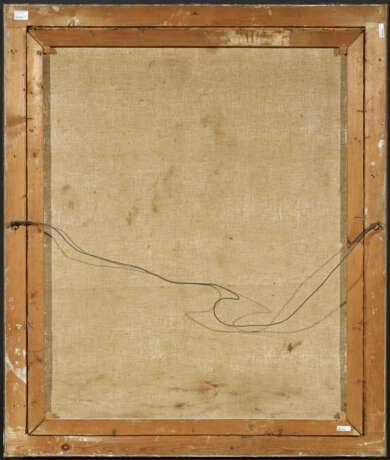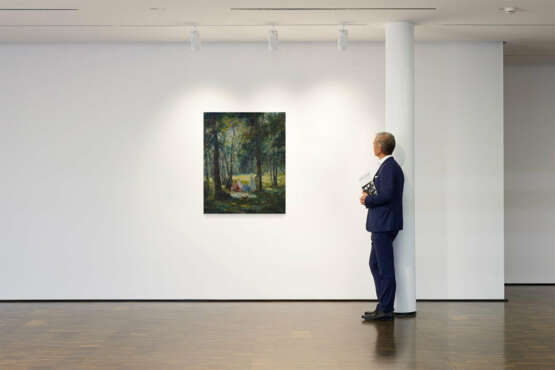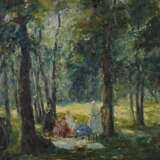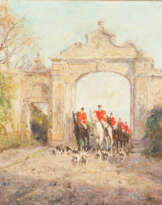ID 548993
Los 1151 | Picnic in the Forest
Schätzwert
€ 3 000 – 6 000
1878 Lodz - 1960 Planegg
Title: Picnic in the Forest.
Technique: Oil on canvas.
Measurement: 116 x 96cm.
Notation: Signed lower right: Otto Pippel.
Frame/Pedestal: Framed.
Provenance:
Private ownership, Germany.
Otto Pippel today ranks among the most important late Impressionists from southern Germany. His motifs include in particular the urban life of Munich in famous places such as the English Garden, the Hofgarten or the Hirschgarten. But also city scenes, figures, still lifes and landscapes can be found in large numbers in his oeuvre. In this Fine Art auction we are able to offer four works which show the variety of Pippel's depictions of nature and cities in his unmistakable, painterly handling of colour as well as his painterly play of light.
The artist was born in Lódz on 10 February 1878. He began his studies at the Kunstgewerbeschule in Karlsruhe, but had to interrupt them due to service in the Russian army. In 1905 he continued his studies in Karlsruhe under Julius Hugo Bergmann and Friedrich Fehr, before he studied in Dresden under Gotthardt Kuehl in 1907 and 1908, who introduced him to Impressionism. During a study trip to Paris, the young Otto Pippel became acquainted with the local Impressionists and studied the painting style of the great Claude Monet, which he further developed into an independent Impressionism.
Otto Pippel's style is characterised by a characteristic impasto application of paint and his painterly landscape moods, which seem to draw the viewer into his multi-layered worlds of colour.
Thus, the viewer of the work "Picknick im Wald" (lot 1151) - which in its subject and composition is reminiscent of the "Frühstück im Grünen" by the great Impressionist and pioneer of Modernism Eduard Manet - can find himself or herself under the trees in front of a clearing and perceive the light rustling of the leaves in the wind almost acoustically. In the painting "Berglandschaft" (lot 1152) we look through trees onto a calm lake, on the surface of which the trees and mountains on the other shore are reflected lightly and hazily behind a delicate blueing. No hint of human life is visible, heightening the calm that emanates from the painting and is reflected in the motif, composition and colouring. A similar basic mood can be discerned in the landscape depiction, which shows the Tiberius Rock on Capri (lot 1153), also without a staffage of people. The painting is distinguished by the intense, earthy colours as well as the thick brushstroke typical of Pippel with a plastic surface structure that makes the landscape autonomous and lively. We also find this style in the painting with the Venice View (lot 1154): in the foreground we see the many small waves of the Grand Canal, on which the boats of Venice move against the imposing backdrop of the Santa Maria della Salute. Here, the mood of a warm Italian summer day in the lagoon city seems to leave the confines of the canvas thanks to Pippel's refined play of light.
After Otto Pippel settled in Planegg near Munich in 1909, he quickly made a name for himself in art circles from 1912 onwards by joining the Munich "Luitpoldgruppe" and establishing contact with Franz Josef Brakl. The Brakl art house organised numerous exhibitions of Pippel's works, which enabled the artist to build up a network beyond the borders of southern Germany and to enjoy increasing popularity among collectors, which he still enjoys today. His success is reflected not least in the numerous forgeries of his works, which, however, hardly come close to the fascinating colouring and brilliant technique of the works from Pippel's hand.
| Künstler: | Otto Eduard Pippel (1878 - 1960) |
|---|---|
| Angewandte Technik: | Ölfarbe |
| Kategorie des Auktionshauses: | Gemälde 19. Jahrhundert |
| Künstler: | Otto Eduard Pippel (1878 - 1960) |
|---|---|
| Angewandte Technik: | Ölfarbe |
| Kategorie des Auktionshauses: | Gemälde 19. Jahrhundert |
| Adresse der Versteigerung |
VAN HAM Kunstauktionen GmbH Hitzelerstr. 2 50968 Köln Deutschland | ||||||||||||||
|---|---|---|---|---|---|---|---|---|---|---|---|---|---|---|---|
| Vorschau |
| ||||||||||||||
| Telefon | +49 221 92586215 | ||||||||||||||
| Fax | +49 221 92 58 62 4 | ||||||||||||||
| Aufgeld | 32% | ||||||||||||||
| Nutzungsbedingungen | Nutzungsbedingungen | ||||||||||||||
| Geschäftszeiten | Geschäftszeiten
|
